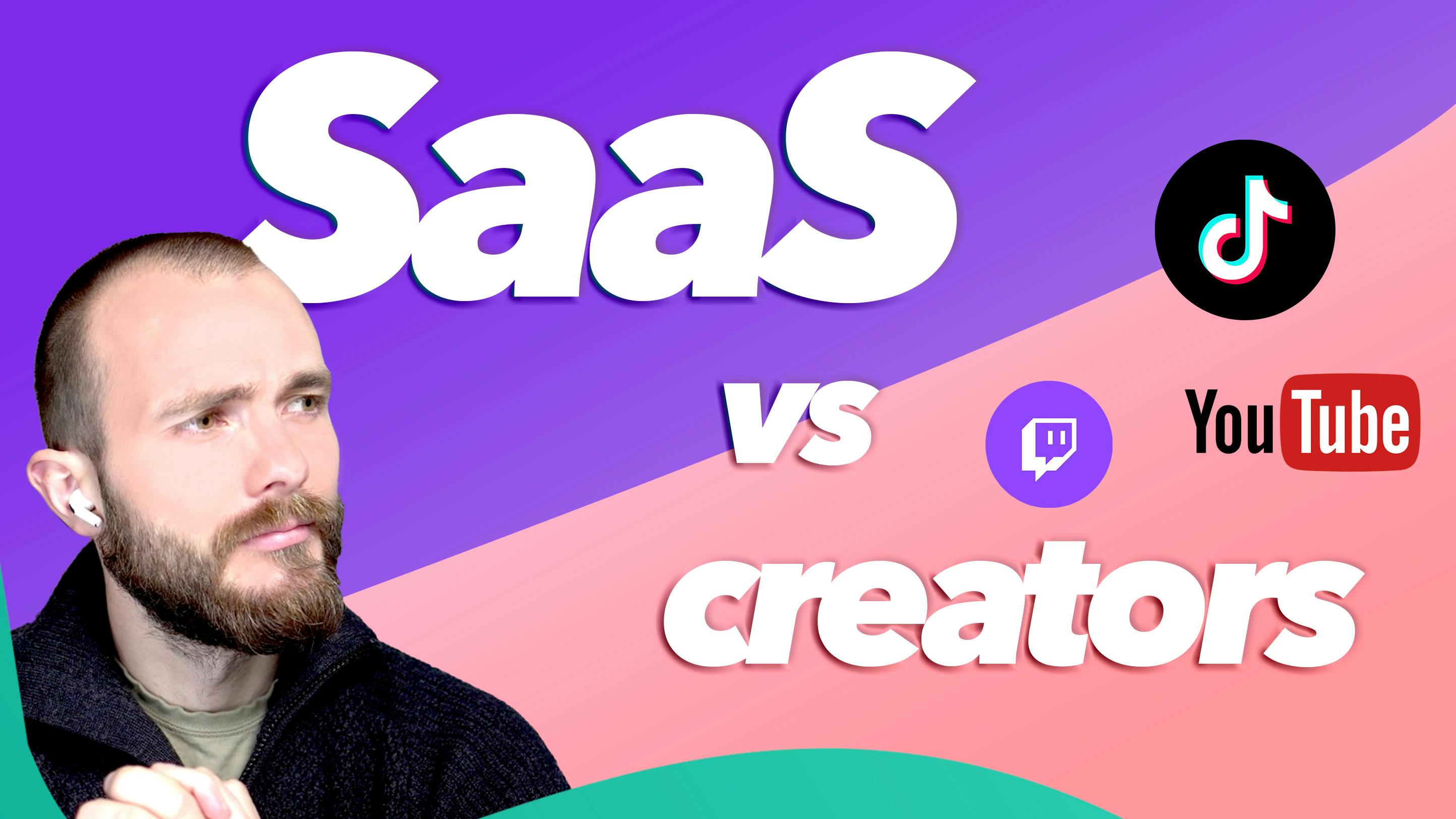Creators vs. SaaS - How the landscape to get traction changed

Contents
Going to market and building traction is arguably one of the 1. hardest and 2. most crucial things for a startup today.
In the B2B SaaS space building product has become more of a commodity than before, as no-code or low-code platforms like Airtable, Shopify, and Zapier have emerged and made it much easier going from 0 to 1 with a working MVP.
Also, lots of great frameworks like React, Flutter, etc. reduce boilerplate and lower the barriers to creating applications and software products.
Lower entry barriers mean more competition, as more people can get up and running in a shorter time frame. The new currency is go-to-market and traction.
To exemplify, let's look at creators and the landscape of Youtube, which have a lot of common traits with a startup being active in a market.
Let's look at creators on Youtube - 10 years ago vs today
1. Being a Youtube creator 10 years ago
10 years ago it was much more difficult to start creating - going from 0-1 meant having to buy a big expensive camera, record and edit video on slow computers, and fight all the social pressure and awkwardness of doing Youtube full time when no one else was. Also, for someone just starting, there were not a lot of success stories or role models to look up to.
However, 10 years ago, standing out from the crowd whilst up and running was not that hard. You could quickly become the biggest Youtuber reviewing toys, making prank videos, teaching code, or reviewing tech in your niche.
There were not as many viewers as today - but the high barrier to getting started meant you had acquired an unfair advantage if you managed to go from 0-1.
Thus, the main difficulty was tied to getting started, not growing in a unique way or managing to stand out from the massive crowd.

2. Being a creator on Youtube today
Creating on Youtube today requires some initial skills and effort - but it is simple compared to 10 years ago. You can start filming in 4K and edit video directly with your smartphone. There is not anywhere near the same barriers to getting started, but on the other hand, as a consequence, competition today is fierce.
All the world's talented actors, personalities, and extroverts - who might not have had the time or patience to get started previously are now your largest competitors and can shoot out entertainment in minutes.
The number of creators and the amount of content is huge. It is now socially accepted and even encouraged to be a content creator and influencer. You (and all the other creators) do not have to swim upstream anymore.
So, to be competitive in today's landscape - you cannot just produce great content and wait for people to find it. You have to be super thoughtful on how to grow your audience. In what ways can people find your content? How can you optimize for Youtube's algorithm's to be competitive? What thumbnails drive high click-through rates? These are suddenly the questions that need answering - not just how can you record, put a video together, and upload it.
Similar trend of saturation in B2B SaaS - Go-to-market is becoming key.
The same trend can be seen in B2B SaaS and technology, as new tools, tech, and best practices emerge. With a growing amount of competition markets are becoming saturated. Thus, having a clear go-to-market strategy is key. Today, founders cannot just build a solid product and send prayers people will recognize it.
Similarily to creators, startups face obstacles to getting up and running - having the necessary skills and resources to create their product or service. But also, as competition becomes tougher, the questions of how to scale, go to market and gain traction become vital.
In coming articles we will drill into different ways to go about building traction - adressing both challenges and potential solutions to make real impact.
Let's go out, be innovative, and get some traction!
Want to learn more about growing SaaS companies?
